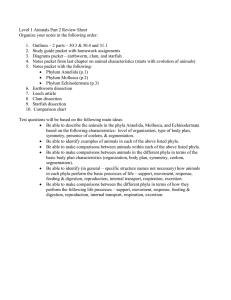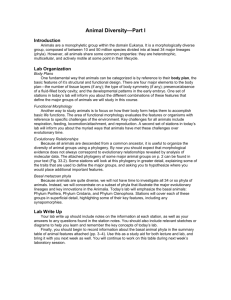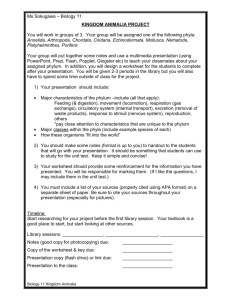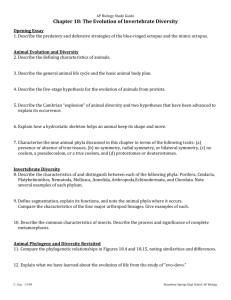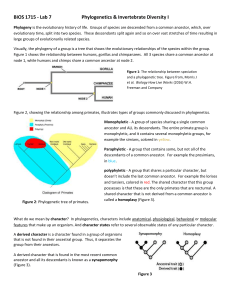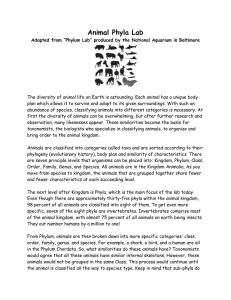Level 1 Animals Part 1 Review Sheet
advertisement
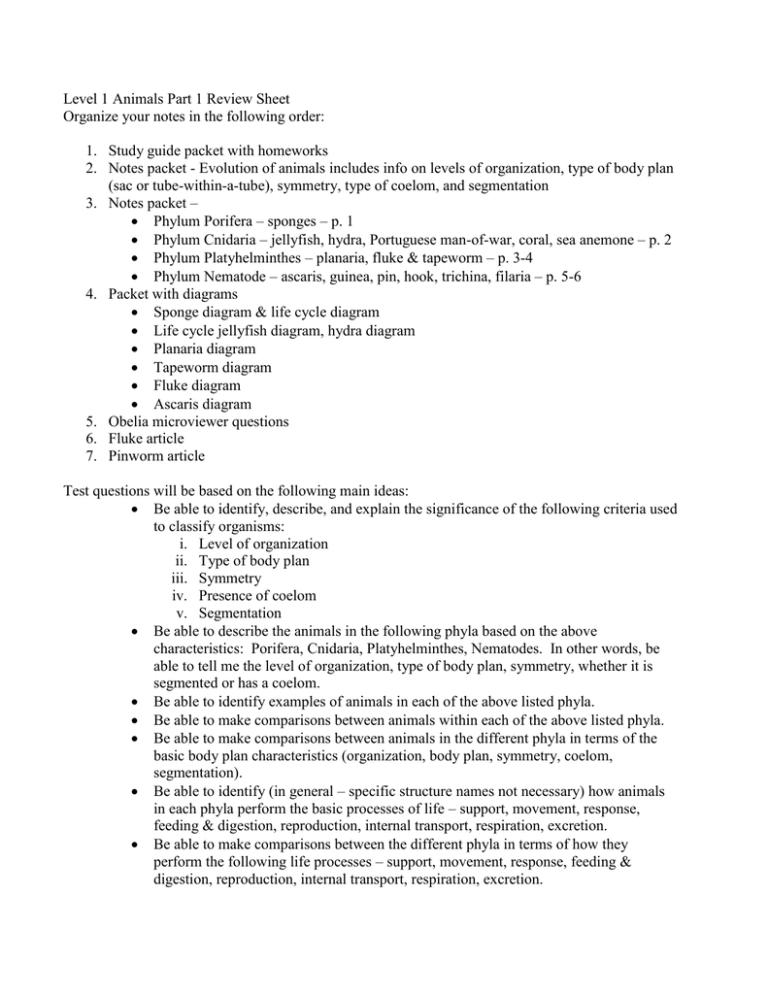
Level 1 Animals Part 1 Review Sheet Organize your notes in the following order: 1. Study guide packet with homeworks 2. Notes packet - Evolution of animals includes info on levels of organization, type of body plan (sac or tube-within-a-tube), symmetry, type of coelom, and segmentation 3. Notes packet – Phylum Porifera – sponges – p. 1 Phylum Cnidaria – jellyfish, hydra, Portuguese man-of-war, coral, sea anemone – p. 2 Phylum Platyhelminthes – planaria, fluke & tapeworm – p. 3-4 Phylum Nematode – ascaris, guinea, pin, hook, trichina, filaria – p. 5-6 4. Packet with diagrams Sponge diagram & life cycle diagram Life cycle jellyfish diagram, hydra diagram Planaria diagram Tapeworm diagram Fluke diagram Ascaris diagram 5. Obelia microviewer questions 6. Fluke article 7. Pinworm article Test questions will be based on the following main ideas: Be able to identify, describe, and explain the significance of the following criteria used to classify organisms: i. Level of organization ii. Type of body plan iii. Symmetry iv. Presence of coelom v. Segmentation Be able to describe the animals in the following phyla based on the above characteristics: Porifera, Cnidaria, Platyhelminthes, Nematodes. In other words, be able to tell me the level of organization, type of body plan, symmetry, whether it is segmented or has a coelom. Be able to identify examples of animals in each of the above listed phyla. Be able to make comparisons between animals within each of the above listed phyla. Be able to make comparisons between animals in the different phyla in terms of the basic body plan characteristics (organization, body plan, symmetry, coelom, segmentation). Be able to identify (in general – specific structure names not necessary) how animals in each phyla perform the basic processes of life – support, movement, response, feeding & digestion, reproduction, internal transport, respiration, excretion. Be able to make comparisons between the different phyla in terms of how they perform the following life processes – support, movement, response, feeding & digestion, reproduction, internal transport, respiration, excretion.


